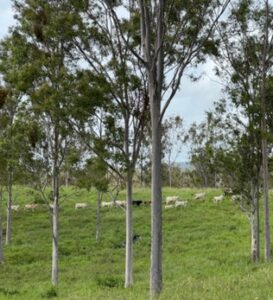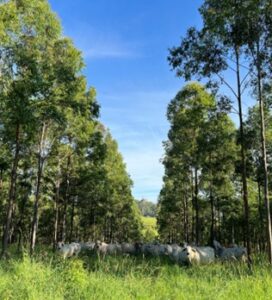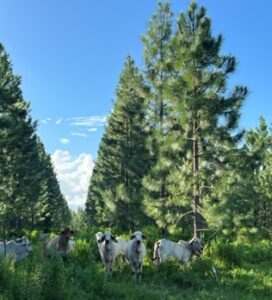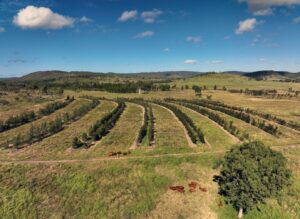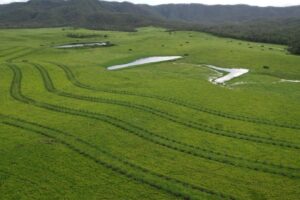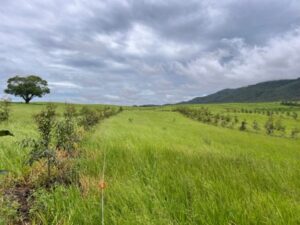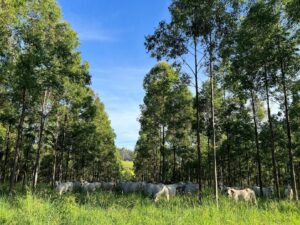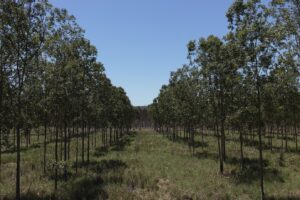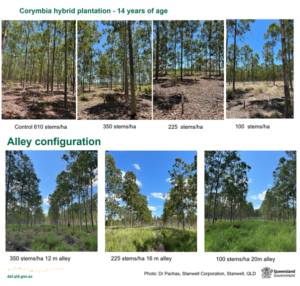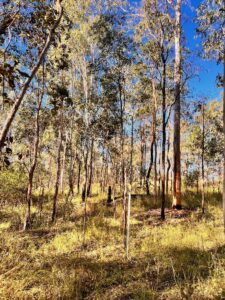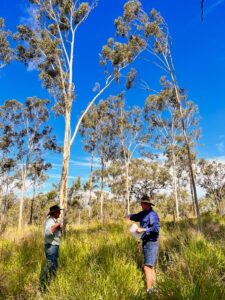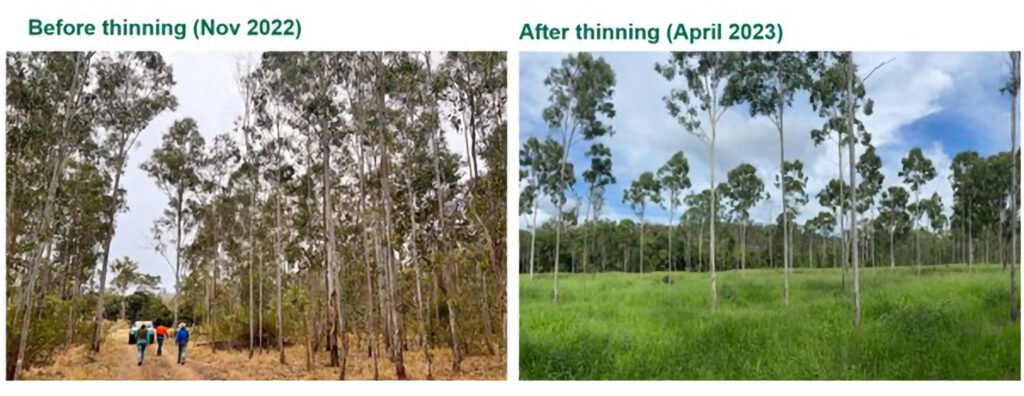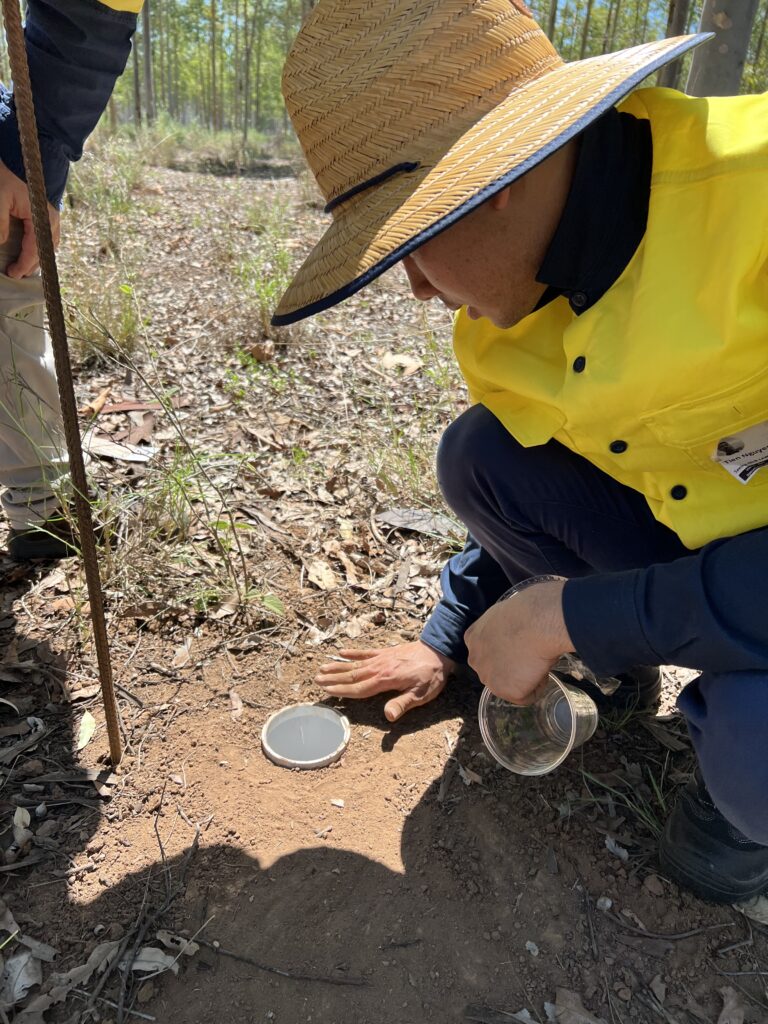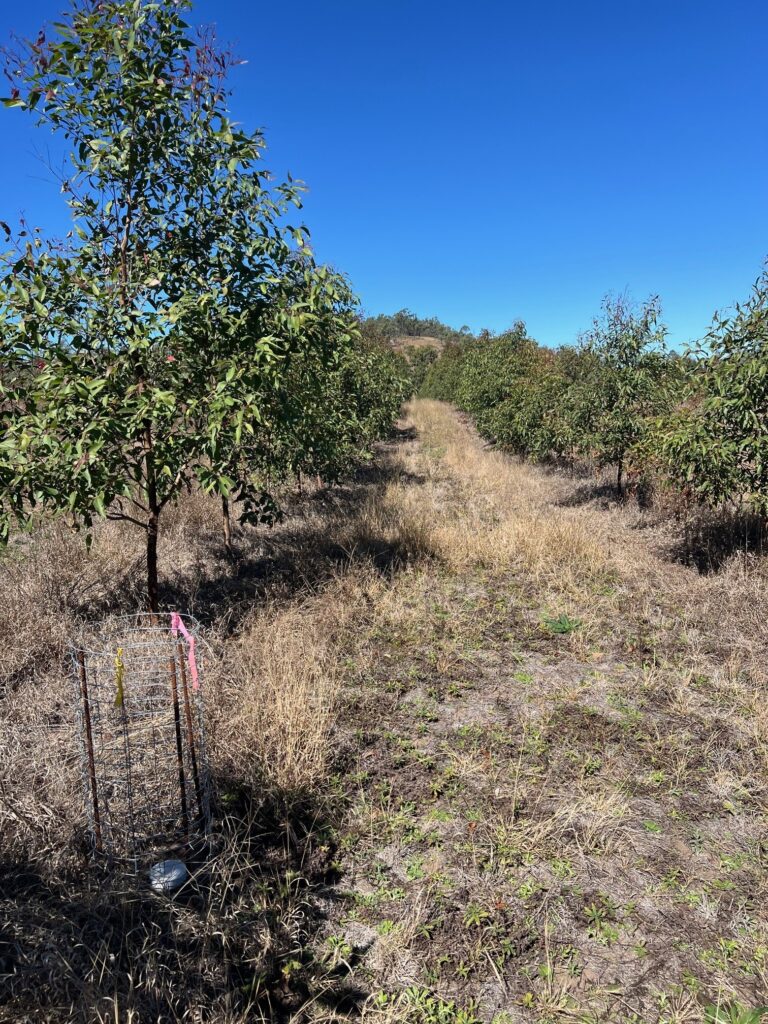The Steak ‘n Wood project aims to quantify the productivity of beef enterprises and ecosystem services of Silvopastoral Systems (SPS) and explore the opportunities for SPS as a pathway to becoming carbon neutral by 2030 (CN30). It is a 5-year project led by the Queensland Department of Agriculture and Fisheries (DAF) and co-funded by Meat and Livestock Australia (MLA) Donor Company.
A strong multidisciplinary team has been assembled to deliver this project and include collaborations with The University of Queensland (UQ), University of Sunshine Coast (UniSC), Department of Environmental Sciences (DES), beef and timber producers and industry (red meat, forestry and energy producing industries).
Below is a slideshow of images from multiple locations. To shuffle the images please use the small arrows underneath.
